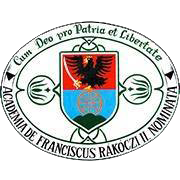Please use this identifier to cite or link to this item:
https://dspace.kmf.uz.ua/jspui/handle/123456789/1487Full metadata record
| DC Field | Value | Language |
|---|---|---|
| dc.contributor.author | Beregszászi Anikó | hu |
| dc.contributor.author | Берегсасі Аніко | uk |
| dc.contributor.author | Csernicskó István | hu |
| dc.contributor.author | Черничко Степан | uk |
| dc.contributor.author | Csernicsko Istvan | en |
| dc.date.accessioned | 2022-01-17T11:54:42Z | - |
| dc.date.available | 2022-01-17T11:54:42Z | - |
| dc.date.issued | 2011 | - |
| dc.identifier.citation | In Magyar Nyelvőr: a Magyar Tudományos Akadémia Magyar Nyelvi Bizottságának folyóirata. 2011. október-december. 135. évfolyam, 4. szám. pp. 414-422. | en |
| dc.identifier.issn | 0025-0236 (Print) | - |
| dc.identifier.issn | 1585-4515 (Online) | - |
| dc.identifier.uri | http://dspace.kmf.uz.ua:8080/jspui/handle/123456789/1487 | - |
| dc.description | http://www.c3.hu/~nyelvor/period/1354/135402.pdf | en |
| dc.description.abstract | A tulajdonnevek megváltoztatása, „asszimilálása” régtől fogva bevett gyakorlat a többnyelvű, de homogenizáló államokban. A nem többségi nyelven használatos település-, földrajzi, közterületi és személynevek ugyanis megjelennek a szimbolikus térben, és – ahogyan a templom tornyán a kereszt vagy a csillag utal a felekezetre – szemmel láthatóvá, közvetlenül érzékelhetővé teszik egy-egy kisebbségi közösség jelenlétét, történelmi, társadalmi és kulturális múltját egy-egy területen. A nevek megváltoztatása egyik eszköze annak, hogy egy csoportnak mint közösségnek a létét vagy jelenlétét, az adott területhez kötődő történelmi hagyományait tagadják (Jernudd 1994). Magyarország egyre gyakrabban kerül valamilyen jogviszonyba, jogi kapcsolatba határain kívül élő magyarokkal (például az államhatárokon kívül élő magyarokkal kapcsolatos alkotmányos kötelezettségvállalása, valamint az úgynevezett kedvezménytörvény és a kedvezményes honosításról szóló törvény nyomán, illetőleg a Magyarországon munkát vállaló, tanuló, esetleg polgári vagy büntetőjogi eljárásban érintett nem magyar állampolgárságú, de magyar nemzetiségű és/vagy anyanyelvű személyekkel kapcsolatos hivatalos ügyintézés révén). Mivel bármilyen hivatalos jogviszony megköveteli a személyazonosság pontos meghatározását, a határon túli magyarok névhasználatának kérdése óhatatlanul felmerül a magyar–magyar kapcsolatokban. | hu |
| dc.description.abstract | Abstract. Personal names of members of national minorities are often altered by the authorities. The Soviet authorities, for example, often Russified the traditional Hungarian forenames of Hungarians in the area of Subcarpathia between 1945 and 1991. Names like Ilona or Erzsébet were changed into Елена and Елизавета, and János or László into Иван and Василий, respectively. After the proclamation of the independence of Ukraine, these names were Ukrainianized: Ілона, Єлизавета, Іван or Василь were written into the identification cards. In official documents the names of Hungarians living in Ukraine (Subcarpathia) are written in Cyrillic letters. Transliteration often alters the original name forms considerably. If we look at the example of a Hungarian name Végső Sándor, whose nationality is Hungarian and whose citizenship is Ukrainian, we can see that his name in his identification document is Вегше Олександр. Patronymic is added to the forename and surname according to eastern Slavic traditions. So, if the first name of Végső Sándor’s father is János, then the form Вегше Олександр Іванович is entered in the official documents. In the passports of Ukrainian citizens, however, the Cyrillic version is transliterated in Latin letters. This means that the name of Végső Sándor is written in the form Vehshe Olexandr. One-third of the people whose mother tongue is Hungarian live outside Hungary, in the neighbouring countries. Hungary often has (official) relations with Hungarians who are not Hungarian citizens. In the process of official administration it often causes a problem to establish the identity of these Hungarians. It is a problem, for example, to decide which name the authorities should consider in the case mentioned above: (a) the traditional Hungarian name (with which the person identifies himself; e.g., Végső Sándor); or (b) the official name in the passport which is the Russified/Ukrainianized form (Vehshe Olexandr). | en |
| dc.language.iso | hu | en |
| dc.publisher | Magyar Tudományos Akadémia Magyar Nyelvi Bizottság | en |
| dc.relation.ispartofseries | A Magyar Tudományos Akadémia Magyar Nyelvi Bizottságának folyóirata;135. évfolyam, 4. szám | - |
| dc.rights | Attribution-NonCommercial-NoDerivs 3.0 United States | * |
| dc.rights.uri | http://creativecommons.org/licenses/by-nc-nd/3.0/us/ | * |
| dc.subject | személynevek | hu |
| dc.subject | kárpátaljai magyarok | hu |
| dc.subject | személynevek átírása | hu |
| dc.subject | Kárpátalja | hu |
| dc.title | A kárpátaljai magyar személynevek átírásának és használatának kérdésköréről | en |
| dc.title.alternative | The problems of transliteration and use of personal names of Subcarpathian Hungarians | en |
| dc.type | dc.type.researchArticle | en |
| Appears in Collections: | Beregszászi Anikó Csernicskó István | |
Files in This Item:
| File | Description | Size | Format | |
|---|---|---|---|---|
| Beregszaszi_A_Csernicsko_I_A_karpataljai_magyar_szemelynevek_atirasanak_2011.pdf | In Magyar Nyelvőr: a Magyar Tudományos Akadémia Magyar Nyelvi Bizottságának folyóirata. 2011. október-december. 135. évfolyam, 4. szám. pp. 414-422. | 9.94 MB | Adobe PDF | View/Open |
This item is licensed under a Creative Commons License





